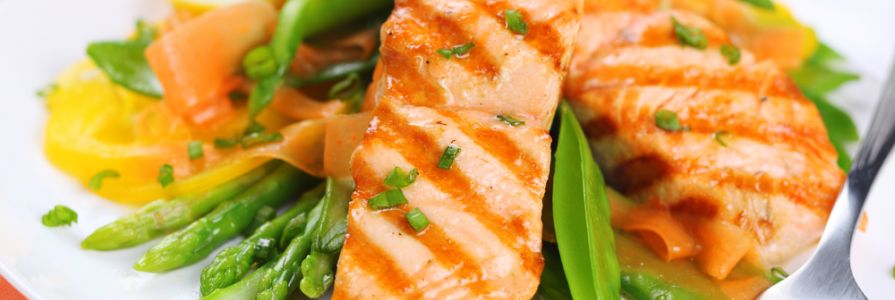While there is no cure for rheumatoid arthritis (RA), effective treatment can help control your symptoms. A treatment plan usually includes a combination of medication; therapeutic exercises and modification of your daily tasks, if necessary; regular exercise, as approved by your physician; hot or cold compresses; relaxation and stress management; and diet, of course.
Anti-inflammatory foods such as those found in a Mediterranean diet not only cool the fires of RA, but also help you to maintain a healthy weight and decrease your risk of other conditions such as cardiovascular disease.
Omega-3 fatty acids found in fatty fish help decrease levels of cytokines, inflammatory compounds found in the blood that tend to be elevated in people with RA. The best fish sources of omega-3s include salmon, mackerel, lake trout, sardines, herring, and anchovies. The American Heart Association recommends eating at least two 3.5-ounce servings of fish per week. Omega-3 fatty acids are best preserved in fish that is not overcooked, so opt for baking or grilling until just done like my Pesto Salmon with Roasted Artichoke Hearts.
Non-fish omega-3 sources: If you’re not a fish fan, there are plenty of other sources of these healthy fats, including walnuts, chia seeds, flaxseeds, hemp seed, and soybeans. Try my edamame hummus for a healthful omega-3-rich snack.
Whole grains: Eating more whole grains such as whole wheat, quinoa, faro, barley, oats, and brown rice may decrease another marker of inflammation found in the blood: C-reactive protein, or CRP. A study in the American Journal of Clinical Nutrition found that people who ate more whole grains decreased their CRP levels more than people who didn’t include these fire-fighting foods. Whole grains also contain micronutrients like selenium that add to their anti-inflammatory effect. And eating more whole grains like in my Quinoa and Black Bean Stuffed Peppers often means you are consuming fewer refined carbohydrates like white rice, white bread, and white flour, which can make RA worse.
Brightly pigmented foods: You might have heard that you should “eat the rainbow” or incorporate brightly colored foods into your diet. This is because the carotenoids and flavonoids that give fruits and vegetables their brilliant hues are also antioxidants that can decrease inflammation.
- The red, blue, and purple hues found in tomatoes, watermelon, red cabbage, red peppers, and red grapes come from health-promoting lycopene, while those found in raspberries, blackberries, blueberries, purple cauliflower, and purple carrots come from anthocyanins.
- Orange and yellow foods such as oranges, golden raspberries, and yellow peppers contain high levels of vitamin C while carrots, sweet potatoes, butternut squash, and cantaloupe are rich in beta-carotene.
- And green foods, especially kale, Swiss chard, collards, beet greens, and spinach contain the antioxidants lutein and zeaxanthin.
Olive oil: A staple of the healthful Mediterranean Diet, olive oil contains monounsaturated fatty acids and a compound called oleocanthal that reduce levels of inflammatory enzymes in the blood similarly to medications like ibuprofen and aspirin. A study in the American Journal of Clinical Nutrition found that people consuming the lowest amounts of olive oil were more likely to develop RA than those consuming the highest amounts of this liquid gold. Choose extra-virgin varieties, which contain the highest levels of anti-inflammatory components and try to use EVOO mostly in low-heat preparation methods like salad dressings, as some of the beneficial compounds can be destroyed by heat.






